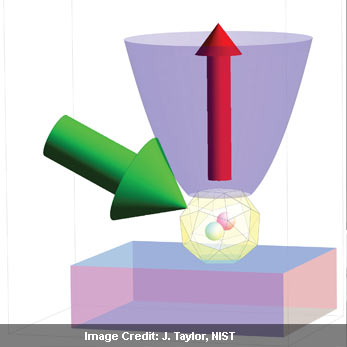
A team of researcher’s long-term objective has apparently been to develop quantum computers. Their finding that a candidate ‘quantum bit’ apparently has great sensitivity to magnetic fields implies that MRI-like devices may investigate individual drug molecules and living cells may be possible.
The candidate system, produced from a nitrogen atom apparently was stuck inside a diamond crystal. It seems to be capable not only because it may sense atomic-scale variations in magnetism, but also as may operate at room temperature. Almost all other devices used either in quantum computation or for magnetic sensing ought to be chilled to nearly absolute zero to function, apparently making it hard to position them near live tissue. Nonetheless, by means of the nitrogen as a sensor or switch may possibly avoid that drawback.
Diamond is apparently created from pure carbon. It may rarely have minuscule defects in its crystalline lattice. A general impurity is said to be a ‘nitrogen vacancy’, in which two carbon atoms may be substituted by a single atom of nitrogen, and thus apparently leaving the other carbon atom’s space empty. Nitrogen vacancies are said to be partly answerable for diamond’s well-known luster, for they are apparently fluorescent. When green light hits them, the nitrogen atom’s two volatile unpaired electrons supposedly have a shine of dazzling red.
The researchers could use minor differences in this fluorescence to apparently establish the magnetic spin of a single electron in the nitrogen. Spin is supposed to be a quantum property that apparently is worth either ‘up’ or ‘down’ and so could stand for one or zero in binary computation. A new achievement by the researchers was to apparently relocate this quantum information frequently between the nitrogen electron and the nuclei of adjoining carbon atoms, thus creating a small circuit which seems to be capable of logic operations.
Understanding a quantum bit’s spin information might be an essential assignment for a quantum computer. It has apparently been an intimidating challenge, but the team established that by shifting the information back and forth between the electron and the nuclei, the information could be enlarged, thereby making it much easier to read.
Jacob Taylor, who is a NIST theoretical physicist mentioned that the findings may be evolutionary not revolutionary for the quantum computing field and that the medical world may obtain useful advantages from the breakthrough long before a working quantum computer could be built. He predicts diamond-tipped sensors conducting magnetic resonance tests on individual cells in the body or on single molecules drug companies, who wish to look into a sort of MRI scanner for the microscopic.
Taylor finally mentioned that this technique has very low toxicity and can be done at room temperature. It could potentially look inside a single cell and allow us to visualize what’s happening in different spots.
